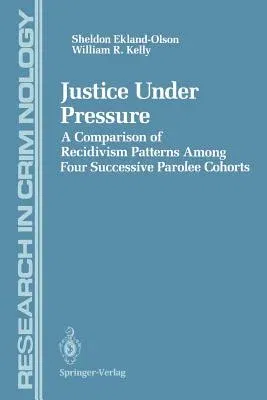Sheldon Ekland-Olson
(Author)Justice Under Pressure: A Comparison of Recidivism Patterns Among Four Successive Parolee Cohorts (Softcover Reprint of the Original 1st 1993)Paperback - Softcover Reprint of the Original 1st 1993, 9 February 2012

Qty
1
Turbo
Ships in 2 - 3 days
In Stock
Free Delivery
Cash on Delivery
15 Days
Free Returns
Secure Checkout
Part of Series
Research in Criminology
Print Length
141 pages
Language
English
Publisher
Springer
Date Published
9 Feb 2012
ISBN-10
1461395194
ISBN-13
9781461395195
Description
Product Details
Book Edition:
Softcover Reprint of the Original 1st 1993
Book Format:
Paperback
Country of Origin:
NL
Date Published:
9 February 2012
Dimensions:
23.39 x
15.6 x
0.84 cm
ISBN-10:
1461395194
ISBN-13:
9781461395195
Language:
English
Location:
New York, NY
Pages:
141
Publisher:
Series:
Weight:
226.8 gm

